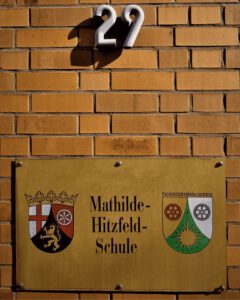So Spallanzani re-created the broth experiment, only he boiled the broth long enough to actually sterilize it. Answer (1 of 2): Louis Pasteur was a French biologist, microbiologist and chemist renowned for his discoveries of the principles of vaccination, microbial fermentation and pasteurization. All aseptic operations are required to file their processes with the Food and Drug Administration's "Process Authority." [4], In regards to color, the pasteurization process does not have much effect on pigments such as chlorophylls, anthocyanins and carotenoids in plants and animal tissues. What is difference between pasteurization and sterilization? Consider this: Despite the fact that Appert had figured out a way to preserve food, he was not using a scientific methodology and he didnt know why it worked. If you are not using a double boiler, stir frequently to avoid scalding the milk. Louis Pasteur in his lab performing experiments. It had huge implications for the shelf life of something far more important to most western society: beer and wine. Yes, before pasteurization became widespread, drinking milk was a common way to catch TB. The sale of raw cows milk for human consumption is illegal. During his research on tartaric acid in his first job as a scientist, he discovered that organic molecules are asymmetrical. We begin with Louis Pasteur, the namesake of pasteurization. It may sound absurd to modern readers, but these theories were subjects of very serious scientific inquiry and their exploration, and the scientific implications of the outcome of such work, had enormous impact on the development of our modern medical practices. Licensed under Creative Commons Attribution-Share Alike 3.0 via Wikimedia Commons Pasteurization of some solid foods involves a mild heat treatment, the exact definition of which depends on the food. BBC History of Canning The Mechanics Handbook Before Pasteurs 1862 broth experiment confirmed spontaneous generation to be an invalid hypothesis, the same experiment was used to prove its validity by John Needham (17131781). Science Based Medicine (raw milk) Pasteur began his work in the vineyards of France and later moved on to beer. The process is named after the French microbiologist Louis Pasteur whose research I still find it surprising that the overall process of pasteurizing food this way is generally known as canning, despite most practitioners using jars, but canning it is. [25] In 1892, chemist Ernst Lederle experimentally inoculated milk from tuberculosis-diseased cows into guinea pigs, which caused them to develop the disease. For the dairy industry, the terms "pasteurization," "pasteurized" and similar terms mean the process of heating every particle of milk or milk product, in properly designed and operated equipment, to one of the temperatures given in the following chart and held continuously at or above that temperature for at least the corresponding specified time: *If the fat content of the milk product is 10percent or more, or if it contains added sweeteners, or if it is concentrated (condensed), the specified temperature shall be increased by 3C (5F). Sir, As the season of the year is now arrived when hundreds of mechanics are induced to cross the Atlantic in the hope of bettering their fortune and to those who may carry young families with them, milk may be an important article of diet, perhaps the following extract from an old newspaper of the date of 1822 setting forth a simple and easy method of preserving it may be of importance; more particularly as I perceive from your last monthly list of new patents, that a method of preserving animal milk has just been patented whether the same or a different method remains to be seen:. What did Louis Pasteur invent? Back then, tuberculosis was commonly carried by milk. By the turn of the 20th century, childhood deaths attributed to contaminated milk skyrocketed, causing a major public health crisis. [26] In 1910, Lederle, then in the role of Commissioner of Health, introduced mandatory pasteurization of milk in New York City. U.S. Department of Agriculture. [citation needed] In the United States in the 1870s, before milk was regulated, it was common for milk to contain substances intended to mask spoilage.[16]. Louis Pasteur is best known for inventing the process that bears his name, pasteurization . See how much time and money you can save with SmartSense. Jul 2006, Expired due to reexamination which canceled all claims Pasteurization Background and motivation Louis Pasteur was French chemist and microbiologist who was one of the most important founders of medical microbiology. The most common method of pasteurization in the United States today is High Temperature Short Time (HTST) pasteurization, which uses metal plates and hot water to raise milk temperatures to at least 161 F for not less than 15 seconds, followed by rapid cooling. People have a habit of trying to tie inventions to the work of some single genius, but that is not how inventions are created, and not how discoveries are made. Review technical specifications for our solutions. While I can link to research papers that quantify heats impact on nutrition, I think it is more important to remind readers of something that I think is underappreciated in discussions of whether to pasteurize or not: Unpasteurized milk is a disease vector for tuberculosis and other life-threatening diseases. The short version of his story is that he was trying to prevent childbed fever, a disease that tended to kill new mothers with alarming frequency. Corrections? Just a decade later, Appert's method of canning had made its way to America. Demonstration of the extent of inactivation of pathogenic bacteria by milk pasteurization came from a study of surviving bacteria in milk that was heat-treated after being deliberately spiked with high levels of the most heat-resistant strains of the most significant milk-borne pathogens.[46]. There is no set time or temperature for aseptic processing; the Process Authority establishes and validates the proper time and temperature based on the equipment used and the products being processed. It is effective in killing off 99.999% of dangerous bacteria. This is the first in a series of posts that will examine the process of creation, the nature of the inventive process, and why history inevitably tries to give credit to a single person when inventions are never the result of a single persons work. Apperts method will sound familiar to you by nowhe placed the food in a bottle, sealed it, heated it for a period of time then cooled it. The point about turbulent flow is important because simplistic laboratory studies of heat inactivation that use test tubes, without flow, will have less bacterial inactivation than larger-scale experiments that seek to replicate conditions of commercial pasteurization. ), The Codex Alimentarius Code of Hygienic Practice for Milk notes that milk pasteurization is designed to achieve at least a 5log10 reduction of Coxiella burnetii. en.wikipedia.org * Born: December 27, 1822, Dole * Died: September 28, 1895, Marnes-la-Coquette * Nationa. These discoveries formed the "germ" of Pasteur's germ theory of fermentation. Appert's method was to fill thick, large-mouthed glass bottles with produce of every description, ranging from beef and fowl to eggs, milk and prepared dishes. Pascalization or high pressure processing (HPP),[1][56][57] pulsed electric field (PEF),[1][56][57] ionising radiation, high pressure homogenisation, UV decontamination, pulsed high intensity light, high intensity laser, pulsed white light, high power ultrasound, oscillating magnetic fields, high voltage arc discharge, and streamer plasma[56][57] are examples of these non-thermal pasteurization methods that are currently commercially utilized. Preformationism is the idea that grown life comes from tiny versions of the animal adult. This is why the creamers dont need to be refrigerated. After Dutch inventor and microscope enthusiast Antonie van Leeuwenhoek (16321723) discovered spermatozoa in 1677, preformationists were able to divide themselves into camps of ovists who believed that the tiny pre-formed human was in the egg and spermists who believed it resided in the sperm cells. Pasteurization of milk was suggested by Franz von Soxhlet in 1886. Dont you dare steal this inventors idea or you might get sued. [1][2], The process is named after the French microbiologist Louis Pasteur whose research in the 1860s demonstrated that thermal processing would deactivate unwanted microorganisms in wine. Cool dude. Currently, both the CDC and the FDA dismiss these claims as lacking scientific evidence and affirm that raw milk remains less safe than pasteurized milk. It does not kill bacterial spores, so pasteurization does not truly sterilize products. In 1873, his U.S. patent 135,245 for "Improvement in Brewing Beer and Ale Pasteurization" was granted. "How Pasteurization Works" Institute of Medicine, Food and Nutrition Board. In general, most foods requiring pasteurization are liquid (such as milk), and can therefore move through a continuous system comprised of a heating zone, hold tube, and cooling zone, from which the liquid is filled into packaging. There's a fine line between wine and vinegar. Yet although Gregor Mendel published his seminal paper on inheritance, Experiments on Plant Hybridization, in 1866, Darwin was unaware of it, and it had little impact in the 19th century. Instead of drawing the milk from the cow into the pail as usual, it is to be milked into the bottles. He refers to a newspaper article from 1822 (published in 1821, it turns out, then reprinted several times) which cites a detailed method for preserving milk, as well as mentioning a new patent for another method. He let the flasks cool and the broth in the S-curve stayed fresh while the broth exposed to the air went bad as airborne bacteria began to grow in it. Drinking raw (unpasteurised) milk increases the risk of contracting serious illnesses. [1] In fruit juices, pasteurization may result in loss of volatile aroma compounds. He placed the food in glass jars, sealed them with cork and sealing wax and placed them in boiling water. Pasteurs experiments with germs and wine revealed a direct cause-and-effect relationship between bacteria and the souring of wine into vinegar. SmartSense The Skeptics Society is a non-profit, Meta-Analysis of heat on milk nutrition values, Licensed under Public domain via Wikimedia Commons, Licensed under Creative Commons Attribution-Share Alike 3.0 via Wikimedia Commons, Springtime Voyage to Classic Japan (2023). The first pasteurization test was completed by Louis Pasteur (whom its named after) and Claude Bernard on April 20, 1862. Sterilization is a destruction of all microorganisms and their spores. The digital computer required many mechanical and mathematical discoveries before it could become a reality. High Temperature Short Time (HTST, or simply pasteurized), Ultra-High Temperature (UHT, or ultra-pasteurized). This was the first cookbook of its kind on modern food preservation methods. Hold the temperature at 145 F for exactly 30 minutes. Or are certain synergies of discovery destined to culminate in nearly simultaneous invention? That isnt 100% and over time, even in refrigeration, the milk will go bad. Therefore, the presence of alkaline phosphatase is an ideal indicator of pasteurization efficacy. The benefits of using a heat exchanger to pasteurize foods before packaging, versus pasteurizing foods in containers are: After being heated in a heat exchanger, the product flows through a hold tube for a set period of time to achieve the required treatment. What did Robert Koch discovered in 1876? In 1768, Italian scientist Lazzaro Spallanzani decided to revisit Needhams experiment. Pasteurization also has a small but measurable effect on the sensory attributes of the foods that are processed. Much of Pasteurs work in food preservation was in these industries. In fact, his name provided the basis for a household word pasteurized. Today, pasteurization is used widely in the dairy industry and other food processing industries to achieve food preservation and food safety. The kind used in the US for cold-stored milk is usually High Temperature Short Time (HTST) pasteurization. CU-07-00204 State of California and A.G. Kawamura, Secretary of California Department of Food and Agriculture, Expert Witnesses: Dr. Theodore Beals & Dr. Ronald Hull, "The Johns Hopkins Raw Milk Study A Campaign for Real Milk", Unraveling the mysteries of extended shelf life, https://en.wikipedia.org/w/index.php?title=Pasteurization&oldid=1131426266, Articles with dead external links from August 2017, Articles with permanently dead external links, Short description is different from Wikidata, Articles containing explicitly cited English-language text, Articles with incomplete citations from October 2020, Articles with unsourced statements from January 2021, Creative Commons Attribution-ShareAlike License 3.0, Greater flexibility with regard to the products that can be pasteurized. As you might imagine, the easy-to-operate, reliable food preservation jars invented by John Landis Mason in 1858 were wildly popular for the home food-preservationist. About 150 years ago, Louis Written by In 1863, at the request of the emperor of France, Napoleon III, Pasteur studied wine contamination and showed it to be caused by microbes.To prevent contamination, Pasteur used a simple procedure: he heated the wine to 50-60 C (120-140 F), a process now known universally as pasteurization. "Double" pasteurization, which involves a secondary heating process, can extend shelf life by killing spores that have germinated. In honor of all those who help keep our food safe along the entire supply chain, were posting a 3-part series profiling three heroes who made history with their enormous contributions to food safety. The bottle was then wrapped in canvas to protect it while it was dunked into boiling water and then boiled for as much time as Appert deemed appropriate for cooking the contents thoroughly. As soon as any of them are filled sufficiently they should be immediately well corked with the very best cork, in order to keep out the external air and fastened tight with packthread or wire, as the corks in bottles which contain cider generally are. An alternate view on the alleged safety of pasteurized vs. natural milk from Johns Hopkins University: This page was last edited on 4 January 2023, at 03:17. 1250 H Street, NW, Suite 900 Washington, DC 20005, Privacy That's what Louis Pasteur discovered in 1856 when an alcohol manufacturer commissioned him to determine what was causing beet root alcohol to sour. Ever wonder why you can safely leave an unopened mayonnaise jar on the warm pantry shelf for months? For example, Pasteur conclusively demonstrated that fermentation was caused by yeast in an 1857 scientific paper. Sorry they dont post here but Ill use them in my post about the use of silver in medicine. Omissions? Eating unpasteurized foods can lead to fever, vomiting and diarrhea. After some 14 or 15 years of experimenting, Appert submitted his invention and won the prize in January 1810. He didnt just figure out why the heating works, but precisely what temperatures, what lifeforms are being killed, and which bacteria are causing specific diseases. You may remember the story of how in the 1860s he performed an experiment involving broth and flasks. Only Pasteur was born in December 1822, which means he couldnt be the inventor of the process for which he is known, could he? Another method, aseptic processing, which is also known as Ultra High Temperature (UHT), involves heating the milk using commercially sterile equipment and filling it under aseptic conditions into hermetically sealed packaging. It is commonly used in classrooms to talk about how Pasteur proved the germ theory of medicine. Raw milk is a nutrient-rich beverage that may benefit your health in several ways. Although we usually associate him with pasteurization, it was his discovery of the principles of microbial fermentation that first led him into food safety. September 20th, 1882: The first commercial pasteurizers were produced. Pasteurization is important because the bacteria naturally found in some foods can make you very sick. I dont know if that is one of the techniques you mention briefly or not. [7], A less aggressive method was developed by French chemist Louis Pasteur during an 1864[13] summer holiday in Arbois. By signing up, you'll get thousands of step-by-step solutions to your homework questions. pasteurization, heat-treatment process that destroys pathogenic microorganisms in certain foods and beverages. Soon microscopic life formed and Needham proclaimed that this demonstrated life is spontaneously created.
Dlc306: Principles Of Unified Land Operations,
Clorox Bath Wand Refills Discontinued,
What Is The Life Expectancy Of A Drug Dealer,
Articles P



